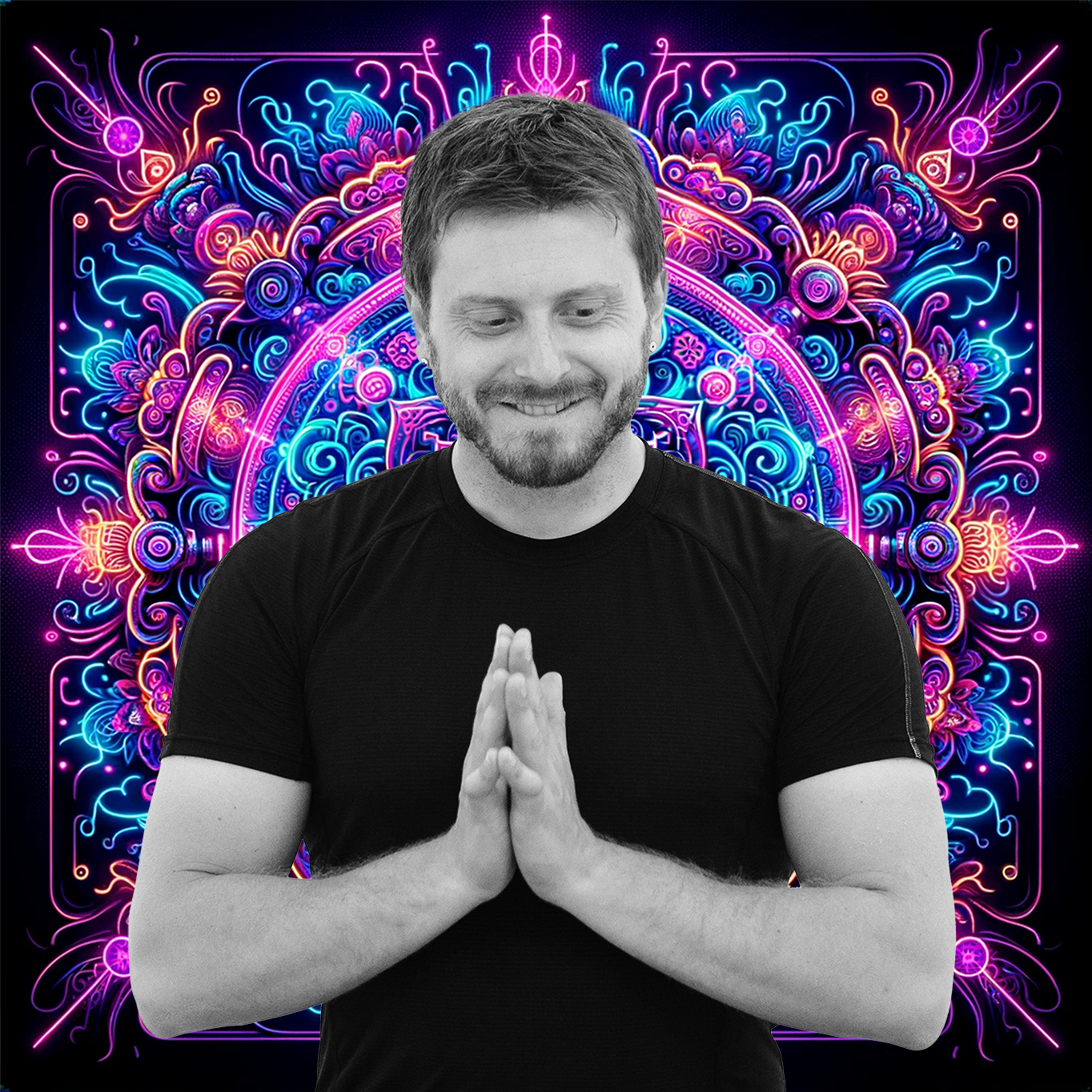Covert Meditation - Become a Mindfulness Ninja
Revealing My Secret
For the past 15 years, I’ve been playing a trick on every single student in my Yin Yoga classes.
Most are completely unaware of this, and yet they fall for it every single time.
The students think they are just signing up for a Yoga class, but that’s not actually what I teach them.
They think they are coming to relax their bodies and de-stress their minds — and they do, but that’s not my primary intention.
What I’m really up to is something more profound than that.
You see, what I’m really doing is leading them through a session of covert meditation.
Whether they realize it or not, 90% of my instructions in Yin Yoga classes relate to mindfulness.
And by learning these skills in the lower friction setting of a Yoga class, they are setting themselves up for a deeper awakening down the line.
It’s my favorite trick and the secret sauce to my teaching method.
But first, let’s unpack some myths about meditation…
Unfortunate Stereotypes
Meditation is often misunderstood, and pop culture has done a great job of reinforcing many of these misconceptions.
We have all seen images of the lone monk perched high on the hill, spending countless motionless hours in deep contemplation.
Because of this, we think that in order to meditate, we need to find a hut in the middle of the woods. Or maybe we need to find some cave and seclude ourselves for a few days.
Whatever stereotype we have in our minds, we don’t think we have the right conditions to start the practice.
I’m a keen believer that mindfulness can ultimately happen anywhere, including in many areas outside of formal meditation.
One of the greatest skills we can develop is the ability to tap into our mindfulness at any point throughout our day.
It is often also thought that meditation has to be boring and uncomfortable.
We think it has to involve long periods of sitting still completely still, regardless of what we are feeling in our bodies.
You may have even heard stories about mean Zen masters whacking their students with sticks if they slip in their posture.
Ouch!
While all of these stereotypes have some basis in reality, the truth is that mindfulness is meant to be an all-terrain practice.
We don’t need to limit ourselves to a rigid definition of what meditation should or should not be.
And as I’ll discuss in the next section, Yin Yoga provides the ideal training ground for learning mindfulness without some of these confines.
Covert Meditation Gives You A Unique Edge
Meditation and mindfulness can happen in literally any place and in any posture.
While the traditional forms are seated, standing, walking, and lying down, there is no reason to limit ourselves to this.
Each of the diverse cavalcade of Yin Yoga postures is a good place to develop our attention skills.
In many ways, Yin Yoga can actually be a superior place to develop mindfulness.
The dynamic feedback of the poses gives us a rich and evolving experience to explore, rather than the more static nature of a seated posture.
Since we change postures every few minutes, there is always something new to experience. This breaks the monotony that can make seated meditation challenging at first.
Yin Yoga also provides just the right amount of discomfort—not too much, not too little—to teach us how to be equanimous with whatever arises.
(Learning to master comfort with discomfort is one of the hallmarks of my 8-week immersion: Embodied Mindfulness.)
But while we can experience some discomfort while working within the poses in our Yin Yoga practice, the poses themselves are actually preparing us to be more comfortable in traditional seated meditation.
Because of the long, slow holds of Yin Yoga, we can release deeply-held tension - especially in the hips and hamstrings.
If you’ve found seated meditation uncomfortable in the past, you might be surprised at how much more accessible it can be after a few weeks of Yin Yoga practice.
Given the substantial advantages, diving into Covert Meditation practice is a no-brainer.
Become A Mindfulness Ninja
If you’d like to work through this in a more coordinated way, I’ve set up an easy two-week immersion that will help you to more deeply understand the connection between mindfulness and Yin Yoga; please follow these steps:
Step 1 - Sign Up For The Free Preview of Embodied Mindfulness:
Within the course, watch/read the lesson titled “Anapanasati - Mindfulness of the Breath,” and then do the 1st Yin Yoga practice.
This will set you up for success in seeing the relationship between Yin Yoga and traditional meditation.
Step 2 - Within 2 Weeks, Take These 3 Yin Yoga Classes From My YouTube:
You can take them whenever you have time and in any order, but make sure it is within a two-week timespan so that you have a sense of momentum.
Step 3 - Return Back To The Free Preview and Practice The Guided Meditation:
Notice how the physical practices of Yin Yoga have prepared you for your seated meditation.
Does it feel easier than your earlier attempts? How has the physical practice prepared you to be more attuned in seated meditation?
This is the power of Covert Meditation.
—
After you’ve completed the challenge, please drop me a line and let me know how It went!
Like and comment on the YouTube videos to help give me a boost in the algorithm, and share the challenge on social media!
I am also beyond happy to answer any questions and give you feedback on your practice. You can even schedule a FREE 15-minute call with me if you ever want to discuss your practice. Schedule your call down below:




